Natural Resource Management
We aim to assist property owners with the following projects -
- Revegetation
- Tree Planting
- Water conservation
- Fencing of remnant vegetation
- Plant Species identification
- Search for and eradicate and control the spread of Skeleton Weed.
Skeleton Weed Management Guide
Information taken from the DPIRD website. Click here for more information
Skeleton weed at a glance
Skeleton weed (Chondrilla juncea L.) is a perennial daisy-like plant that develops from a rosette into a sparsely-leafed, erect plant of up to 1m tall. Erect, branched stems, with little or no foliage, are produced from early October, giving the plant an untidy-look. The rosette form and the adult plant exude sticky white sap when cut.
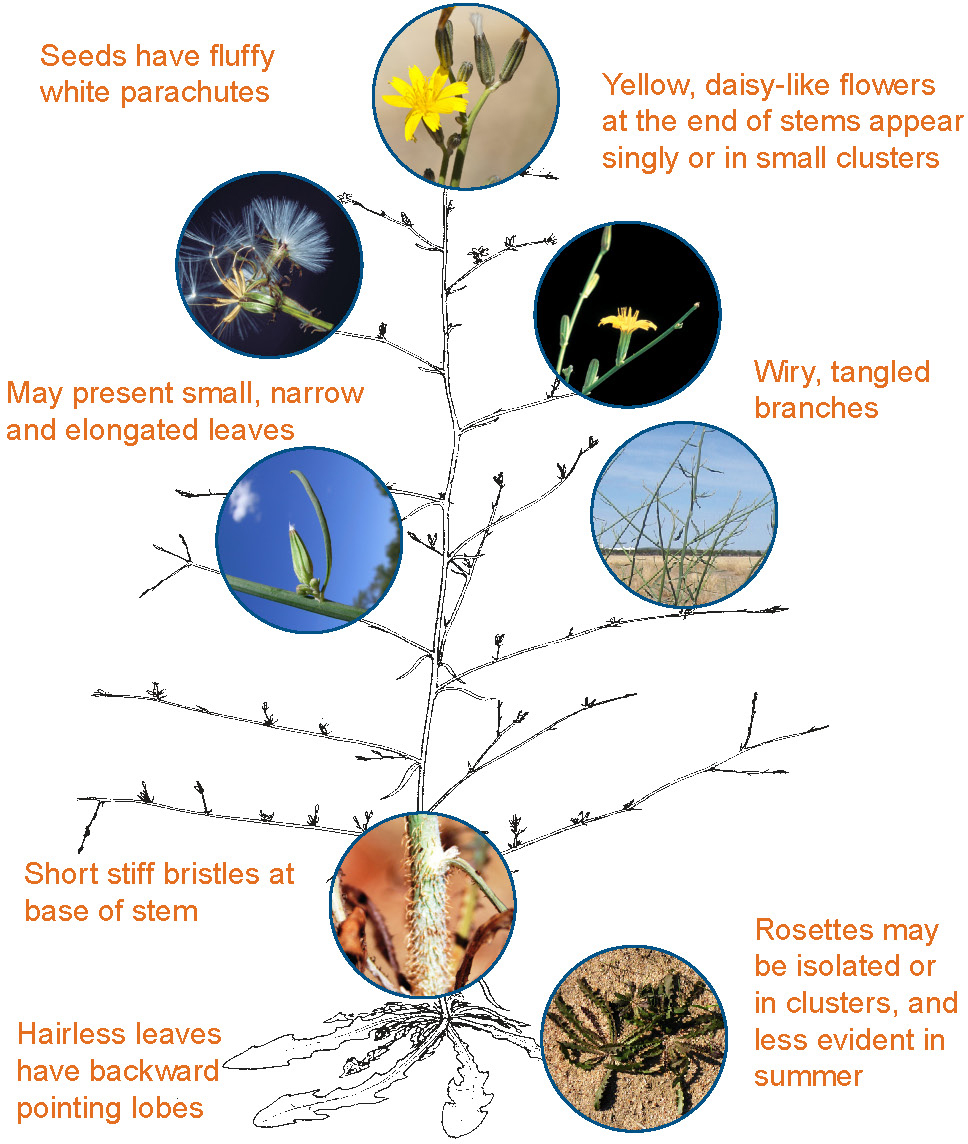
|
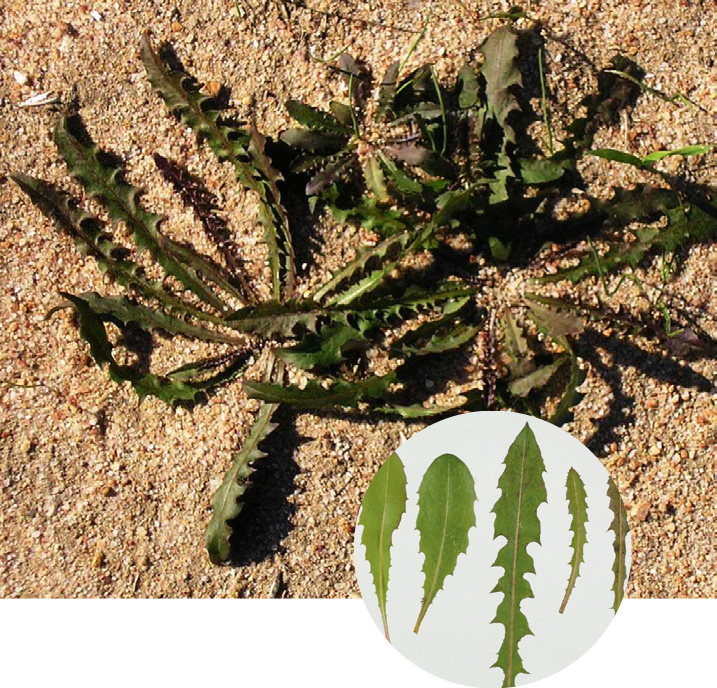
Rosette leaves vary in shape, but barbed lobes remain a key feature.
|
Rosette leaves 5–10cm long present hairless barb-like lobes that point backwards towards the centre of the rosette.
A rosette can be sparsely or densely-leafed, depending on plant age, soil type and how extensive the root system has become. In late spring, stems form and the rosette usually dies off, though a healthy rosette with a well established root system may persist well into summer if there is adequate soil moisture.
Summer rain or high residual soil moisture will encourage old rosettes to re-emerge, even after chemical treatment.
|
|
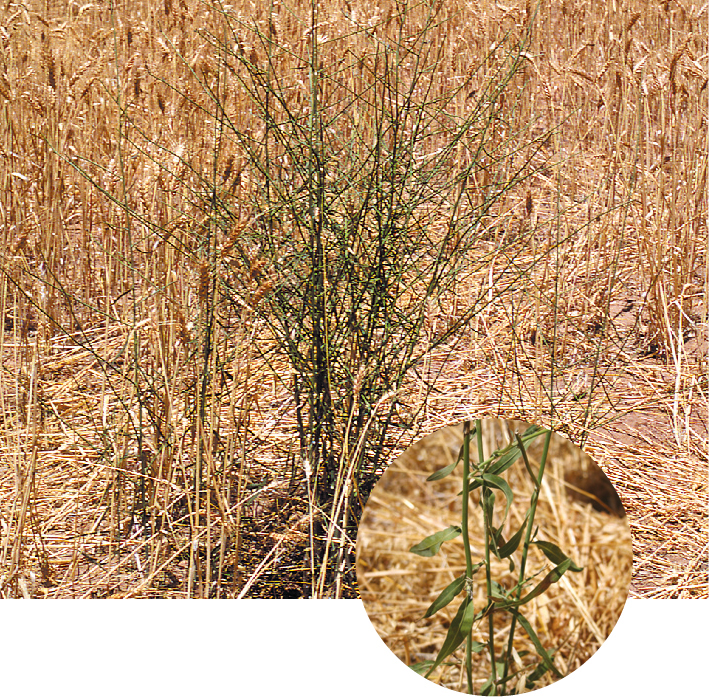
Can have prominent leaves along the stem in good growing conditions.
|
Mature plants have an extensive root system. The tap root can be over 2m long and the lateral roots can radiate up to 50cm from the main tap root.
The plant develops one or more wiry-branching hairless stems growing up to 1m tall. Stems present stiff, downward-pointing bristles at the base. Leaves, if present, are narrow and elongated.Plants can live for several years; stems dying off in late summer as seeds mature. Summer rain may cause regeneration and further seed production.
Lateral root fragments as small as 5 to 10mm can generate new plants. These fragments are usually dragged by farm machinery.
|
|
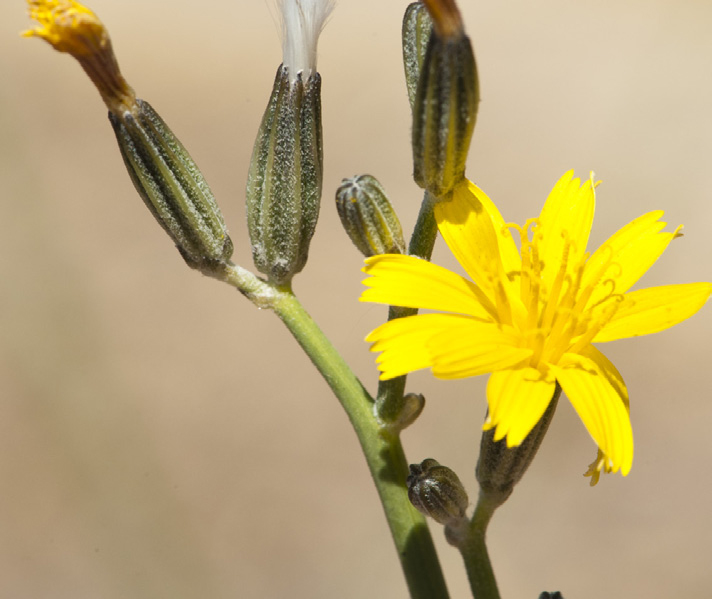
Each ‘petal’ presents small teeth across its blunt tip.
|
Flowers are bright yellow and daisy-like with 9–12 ‘petals’. Individual flower heads are about 20mm wide. Flowers appear on short stalks, in the angle between the plant stem or branch and a leaf or bract. They may occur singly or in clusters of two to five flowers.
Flowers are found along the full length of the branches and at the tip of the main stem, appearing from December to May.
|
|
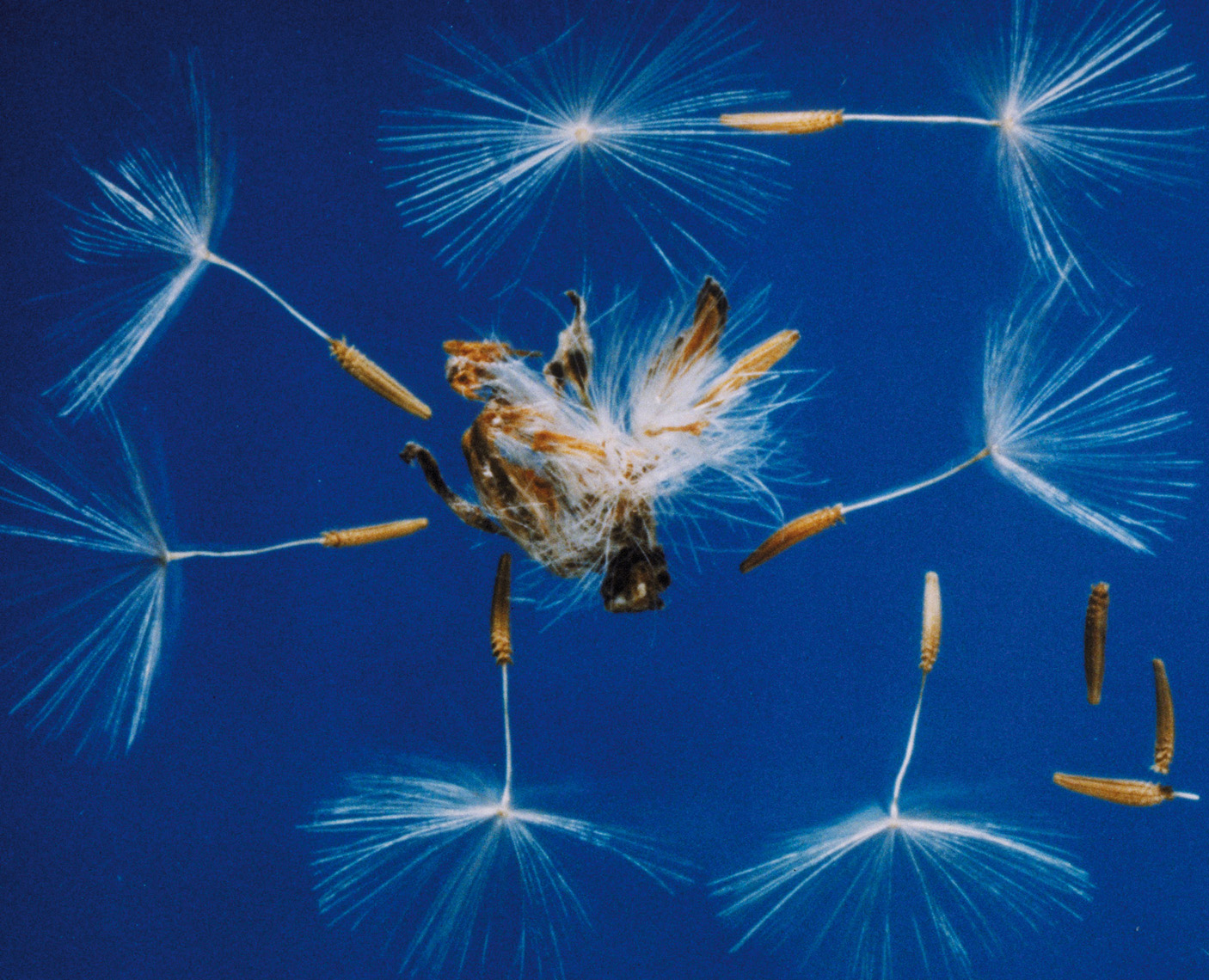
A healthy, mature plant produces 10 000 to 20 000 seeds.
|
Seeds are arranged in ten or eleven seeds per flower. Each seed is 5mm long, with a white parachute attached to the top (to aid wind dispersal). Seeds are grooved, acting like ‘teeth’ to catch on wool, hair or fur.
Seeds are fragile and susceptible to mould and bacteria (causing desiccation in unfavourable weather conditions), and predation by insects and birds.
If adequate summer rainfall occurs, seeds germinate quickly, but usually die if there are no follow up rainfall events. If no rain falls during summer and the seed remains viable and survives predation, it will germinate in the following autumn or winter.
Seeds rarely survive more than 12 months under field conditions, so there is no long-term seed bank.
|
Where does skeleton weed grow?
Skeleton weed is mainly found in crop and pasture paddocks but can also be found growing in various types of environments including road verges, railway lines, industrial sites, tree plantations and bush areas.
|
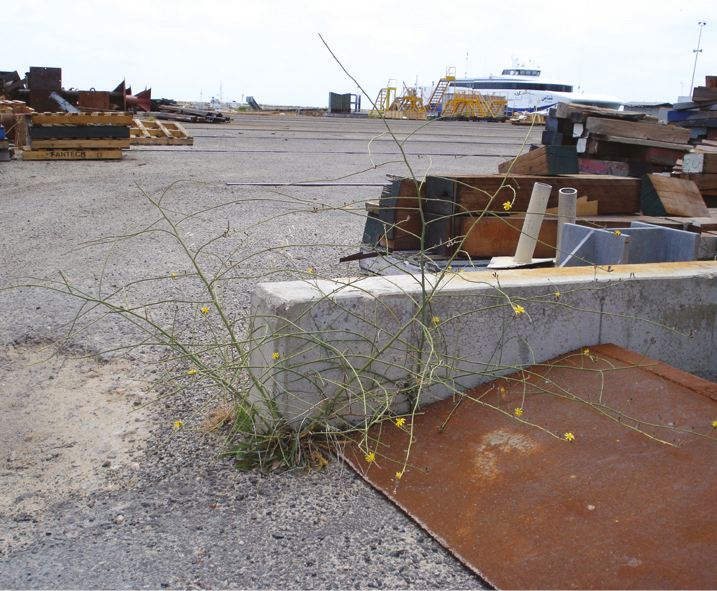
Mature plant growing in industrial yard.
|
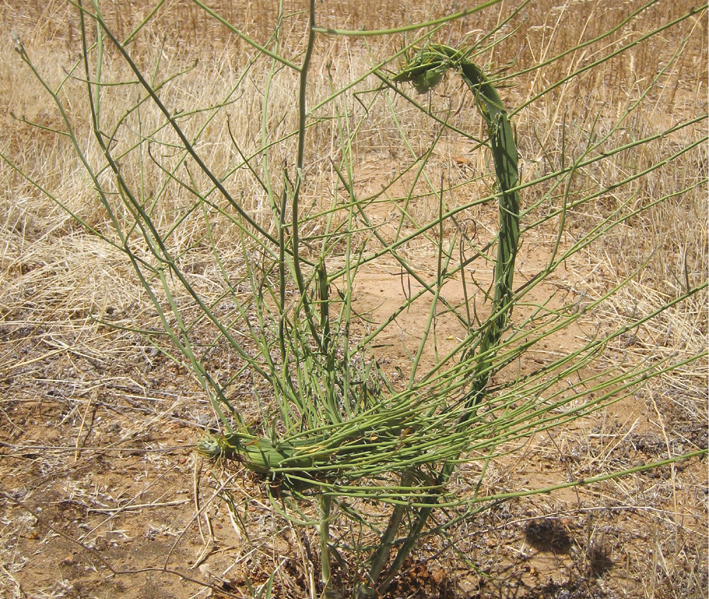
Plant with elongated stems from herbicide or frost damage.
|
|
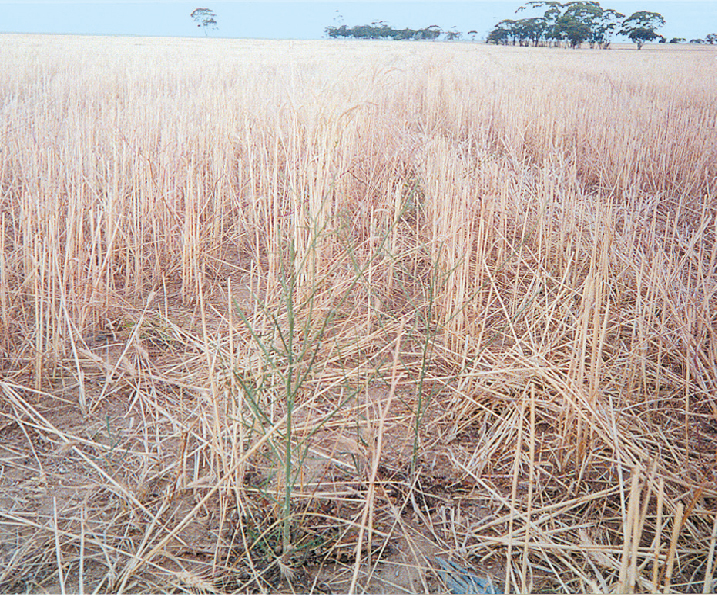
Skeleton weed can be difficult to spot among crops.
|
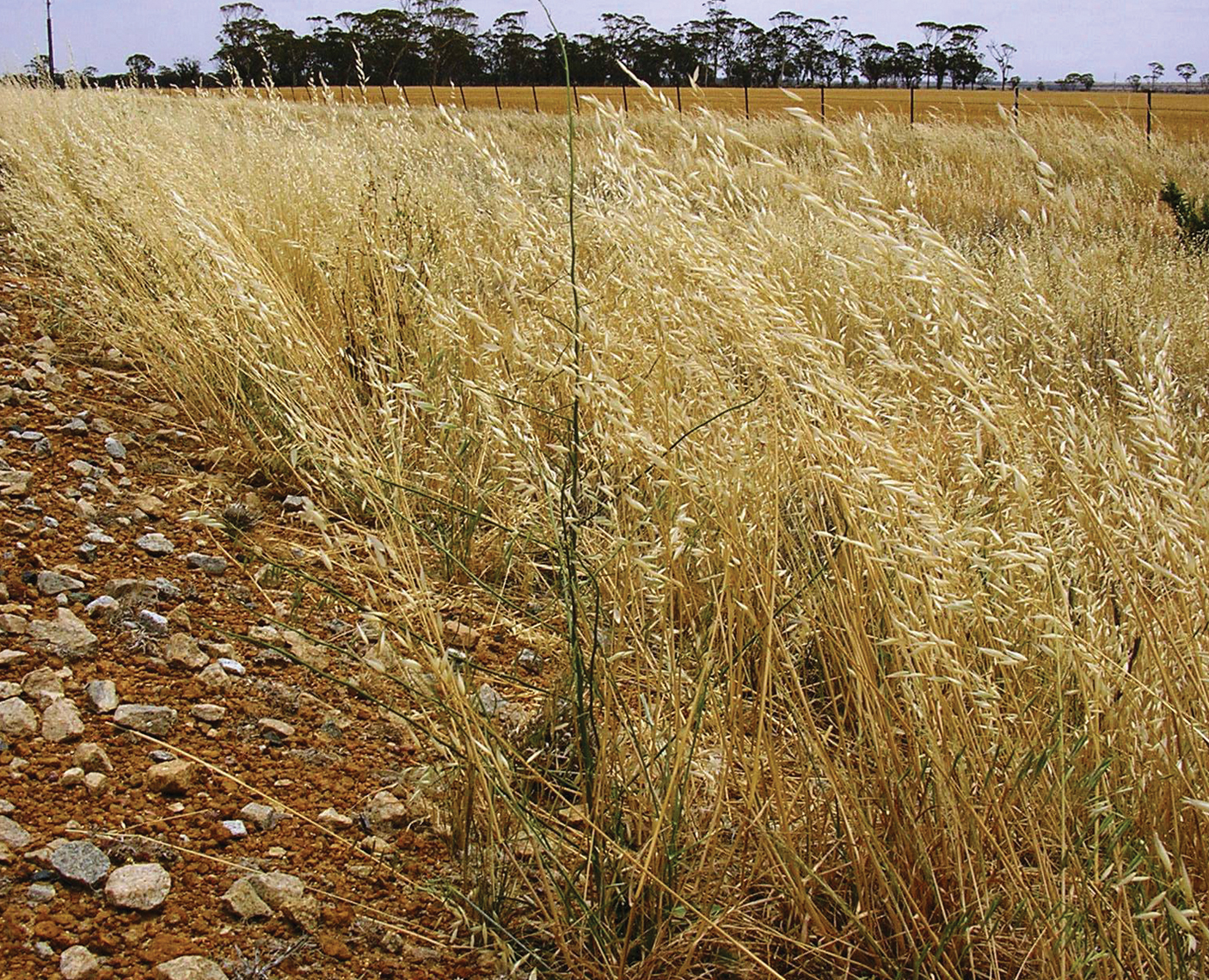
Plant growing alongside rail line.
|